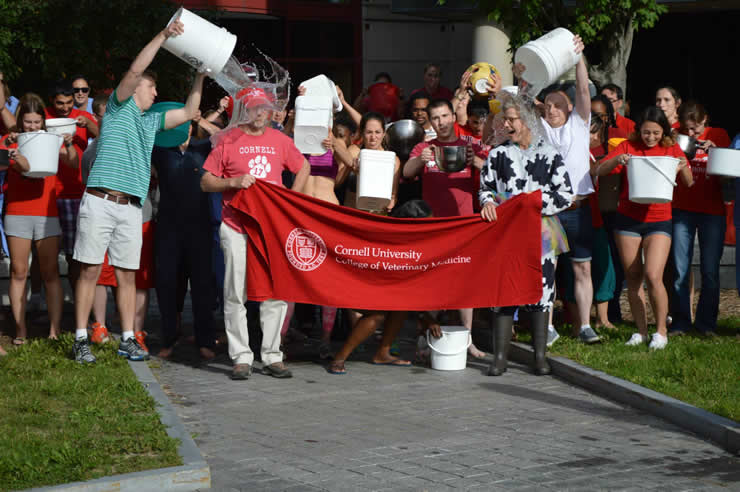There has been a lot of hype about the so called ‘Ice Bucket Challenge’ on the media. The Ice Bucket Challenge started out as an awareness campaign about the neurodegenerative disease of amyotrophic lateral sclerosis.
The fact that so many people have been challenging others to this act and posting them in the process of the act, that sometimes it is felt that the purpose of this awareness campaign has been lost. Most people who attempt the ice bucket challenge don’t even bother donating to the cause. The least they can do is to donate the cost of the ice cubes in the bucket.
Let us discuss the facts of ALS:
- It is widely known as Lou Gehrig’s Disease
The disease came in the spotlight when a New York Yankees player at the age of 36 was diagnosed with amyotrophic lateral sclerosis and subsequently died two years later.
- The disease affects the motor neurons of the central nervous system
The motor neurons that send signals or messages from the brain to the muscles are affected in the disease. Gradually the neurons get so affected by the disease they stop functioning completely and disable any form of movement of the body.
- Initial symptoms of ALS
The initial symptoms of ALS are easy to overlook as they start with slight muscles cramping or pain. Gradually the muscles get weak and you might even have problems in swallowing or speaking and even experience weakening of the muscles in the limbs that facilitate movement.
- ALS does not affect the 5 basic senses
ALS usually does not affect the five basic senses that include sight, smell, touch, sight and taste. As a matter of fact, the person suffering from it will be able to perceive stuff but will not be able to respond to them, due to the weakened muscles.
Most patients retain their entire mental intelligence or cognitive ability when they suffer from ALS, but lose their ability to function their muscles.
- There is no cure for ALS
The cure for ALS has not been discovered yet. We can however slow down the progression of the disease by certain drugs and even treating the symptoms related to muscle weakening by exercise or other methods.
There was not enough funding to research the cure for this disease till the Ice Bucket Challenge arrived. Research is progressing and we soon might have a cure.
- Life expectancy is variable
People diagnosed with ALS do not live long. However the lifespan varies from 2 to 5 years. Since this disease involves the degeneration of muscles that affect the nerve cells in the spine and brain that in turn affect the functioning of the nervous systems of the entire body.
Patients gradually lose functioning and finally die of a fatal disease of the heart, respiratory system or other important functioning systems of the body.
- Age is not a factor
ALS can affect any age group. But it is more commonly spotted amount the age group of 50 to 70 years. Research has found that it affects men more than women and that a minor portion of the patients are below 50 years of age.
- No test
There is no test to really diagnose ALS. You can only find out by really looking into the symptoms and excluding the possible causes of the diseases.
So now that you know why people have been drowning themselves with buckets of ice, it’s time for you to donate something for the cause.
Written by: Rasha Ashraf


















